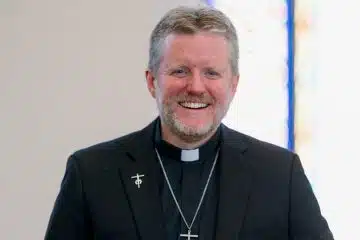Original Shame Part 3
 Note: This article is part of an ongoing series on Pope St. John Paul II’s “Theology of the Body” (TOB).
Note: This article is part of an ongoing series on Pope St. John Paul II’s “Theology of the Body” (TOB).
With their fall from grace, our first parents experienced a decisive shift in their relationship, marked by what I have been referring to as original shame. In my last article, I discussed how this experience emerged because of the new state of internal and interpersonal disharmony in which the man and woman found themselves. Original sin caused a weakening of “control of the soul’s spiritual faculties over the body” and brought about “tensions” between man and woman, “their relations henceforth marked by lust and domination” (CCC, 400). Catholic tradition refers to this inner state of disorder that leads to lust and domination, which we all inherit, as concupiscence.
Because of this new situation the man and woman found themselves in, they experienced a new urge to cover the signs of their sexuality, which John Paul II referred to as “reciprocal shame” (TOB 28.1). Being a result of sin, it is not hard to see this new experience of shame as a bad thing. Clearly, it’s not supposed to be this way. We were made for communion, not hiding. However, God never abandons man and always seeks with His infinite power, wisdom and love to draw good out of evil. In this light, even our experience of shame can be used to guide us back to a deeper appreciation of the dignity of the human body. Let us examine how.
In contemporary psychology, shame is typically seen as toxic for the human person. This is because psychologists tend to equate shame with the experience of seeing oneself as bad, defective or unworthy. If I see myself in this way, I will dread self- disclosure because I anticipate that I will be harshly treated and rejected by others. In the face of such a situation, mental health professionals—myself and my colleagues included—work to increase self-acceptance and awareness of one’s goodness.
While this contemporary approach to shame is valuable, it differs significantly from Pope St. John Paul II’s use of the term in TOB and his prior work Love and Responsibility (LR). When he spoke of shame, especially the reciprocal shame experienced by man and woman, he had in mind the urge to hide the sexual features of our bodies from one another. This flows from our experience of concupiscence. Shame moves us instinctively to shield from the eyes of the other those aspects of our bodies most connected with sexuality because we perceive that others may look upon our bodies not as the sacrament of the person, but as mere objects to be used. Thus, shame, in this sense, is a reaction to the possibility of being used.
In TOB and Love and Responsibility, the saintly pope wrote extensively about how the dignity of the human person requires that we never treat another human being as merely an object of use. Rather, the only proper response to another person is love. He applied this “personalistic norm” especially to the relations between man and woman in which the sexual appeal of the body—in the presence of concupiscence—can become a source of temptation to use the other for our own selfish purposes. Shame moves us to prevent this use by “concealing the sexual values in order to protect the value of the person” (LR, p. 165, emphasis added). In this sense, shame is very closely related to, and a building block of, the virtue of modesty.
This has nothing to do with a prudish view of the body or sex as inherently bad or evil. Rather, as Pope St. John Paul II repeatedly affirmed, sexual shame can actually help reawaken in us an appreciation for how good and even sacred our sexuality is. He wrote that through shame, man and woman “become conscious of the spousal meaning of the body” and are moved “to protect it” (TOB 31.1). In protecting the spousal meaning of the body, we implicitly say to ourselves and others, “Behold, it is very good” (Gen 1:31).
 Dr. Andrew Sodergren MTS, PSY.D is a Catholic psychologist and director of psychological services for Ruah Woods. He speaks on the integration of psychology and the Catholic faith. He and his wife, Ellie, have five children.
Dr. Andrew Sodergren MTS, PSY.D is a Catholic psychologist and director of psychological services for Ruah Woods. He speaks on the integration of psychology and the Catholic faith. He and his wife, Ellie, have five children.
This article appeared in the April 2023 edition of The Catholic Telegraph Magazine. For your complimentary subscription, click here.













